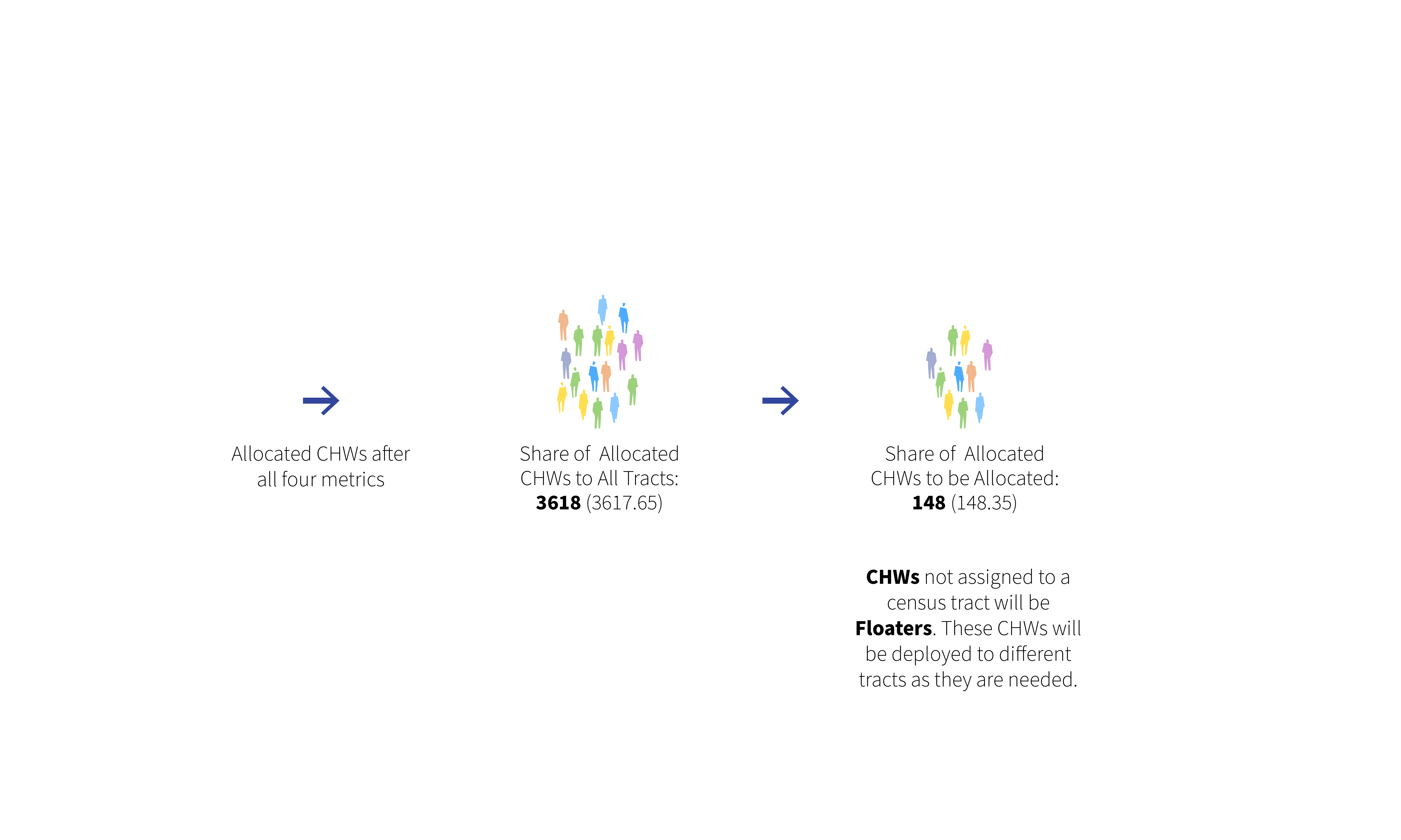








In Mapping the New Politics of Care, Gregg Gonsalves and the Center for Spatial Research propose, "a New Deal for Public Health, with a Community Health Corps of one million community health workers (CHWs), to attend to the health needs of America's residents." Our project builds on this proposal and imagines how Community Health Workers could operate within existing networks to create a better system for tenants.

To look closer at how these workers could operate, we've selected a focus region that includes the River Park Towers and the Bronx Housing Court. Using the Mapping the New Politics of Care algorithm for the distribution of CHWs by Social Vulnerability Index, the Bronx would receive 3,766 workers.

We propose that these Community Health Workers participate in an anti-eviction system by partnering with the community's existing network of spaces, stationing workers in in places like schools, service centers, and other neighborhood nodes.

To better understand the roles of CHWs in an anti-eviction system, we developed a distribution system based on SVI and population. This gives us an idea of how many CHWs could be alloted per census tract and allows for some surplus workers to float between tracts. In Census Tract 53, home to the River Park Towers, 12 CHWs are alloted. We propose these workers have designated specialities to address the area's highest components of social vulnerability.
By partnering CHWs with neighborhoods and existing social infrastructure we are accessing people in the spaces they already frequent. But part of the benefit of the CHW system is their mobility. This mobile system allows for workers to meet tenants at their homes, which can promote a more holistic approach to care.

To assist in a new anti-eviction system, Community Health Workers could participate in Public Outreach, Home Visits, and help facilitate Tenant/Landlord Resolution. Explore the other components of the proposal to learn more about these roles.